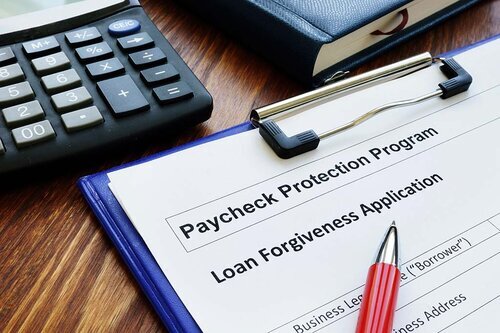PPP Loan Forgiveness: Your Questions Answered
ZUNA invited Geffen Mesher’s Dave Porter and Caleb Pilling to speak to a group of ZUNA clients recently on PPP loan forgiveness, a topic at the top of mind for many business owners and leaders.
As a reminder, the Paycheck Protection Program (PPP) was a part of The Coronavirus Aid, Relief, and Economic Security (CARES) Act that was passed by Congress with overwhelming, bipartisan support and signed into law by the President on March 27, 2020[1]. The CARES Act authorized over $2 Trillion in economic relief to businesses and individuals impacted by COVID-19. Interesting facts: Dave commented that while 87% of PPP loans were under $150,000, with the average loan $101,000, 20% of the total PPP funds allocated went to only 6% of borrowers. And, although not well publicized, there is $134 Billion of unallocated funds remaining in the program.
The CARES Act originally outlined some fairly stringent guidelines for how and when funds could be used in order to qualify for forgiveness. However, on June 5, 2020, the PPP Flexibility Act of 2020 (Flexibility Act) was signed into law[2] and amended the PPP to give borrowers more freedom in how and when loan funds are spent while retaining the possibility of full forgiveness.
The discussion with Dave and Caleb focused primarily on which rules and timelines companies should use to complete their own forgiveness applications. Here are a few of the key takeaways:
Coverage Period: There are two coverage periods to choose from when you submit your forgiveness application. The original coverage period was 8 weeks from the date of the funding of your loan. The Flexibility Act extended the coverage period to 24 weeks with the spend period ending December 31, 2020. Geffen Mesher suggested that for most companies it can be advantageous to choose the 8-week coverage period particularly if you had or anticipate any reduction in staff beyond the 8-week time period.
What’s Covered: Under the PPP forgiveness guidelines covered expenses can be actual or accrued. Don’t be egregious but it is ok to pay some expenses in advance in order to have them included in your forgivable expenses. Also, you can submit more expenses than your loan amount to accommodate for potential exclusions. The four categories of covered expenses include payroll costs, interest, utilities, and rent. The only expense that cannot be paid in advance is interest.
Safe Harbors: There are a couple of Safe Harbors including the ability to use the EZ Form. If you are a sole proprietor or had to shut down completely due to COVID-19 (and meet guidelines on reductions in employee compensation), you may complete the simplified EZ Form. Another Safe Harbor allows loans under $2,000,000 to avoid having to document economic necessity for the loan.
Documenting economic necessity: If you don’t qualify for a Safe Harbor, start by creating a timeline of events including both internal and external events that contributed to the financial hardship (government mandates for closure, social distance and PPE requirements, employee illness, etc.). See your CPA or contact Geffen Mesher if you need additional assistance with this piece of the application.
Repayment period on non-forgivable expenses: If you wish to request the five-year extended repayment period (beyond the original two-year period), you must request from your lender.
Other questions that came up during the session include:
Is Families First Coronavirus Act (FFCRA) paid leave excluded? Yes.
What is the tax treatment on deductible expenses? Expenses paid with PPP loan proceeds are not deductible currently.
Do voluntary staff reductions (i.e. retirement) count? No.
Should I file now or wait for further action from Congress? There is no reason you have to file now and you may want to consider waiting as there is still the possibility of a follow-up COVID-19 economic relief bill that could provide further assistance.
Help completing your application: Geffen Mesher suggested that your payroll provider is a great first stop for the information needed to complete your forgiveness application. It was also pointed out that some of the payroll reports early in the process were not always accurate, so it is a good idea to rerun your payroll provider’s report to check for accuracy when you are ready to complete your application. If you need help with your application or have further questions, contact ZUNA and we will connect you with a resource.
Late Breaking News: Since our event, the U.S. Small Business Administration released a simpler loan forgiveness application that will apply for loans of $50,000 or less.[3]
We hope you found this recap helpful, and please reach out to the ZUNA team with questions. Thank you to Dave and Caleb from Geffen Mesher for sharing their expertise. You may keep up on the latest in finance and benefits legislation on the ZUNA blog.
[1] https://home.treasury.gov/policy-issues/cares
[2] https://home.treasury.gov/news/press-releases/sm1026
[3]https://www.napa-net.org/news-info/daily-news/sba-and-treasury-simplify-ppp-loan-forgiveness


